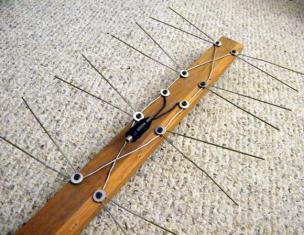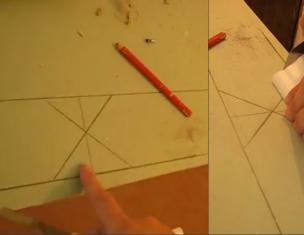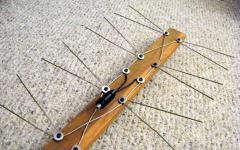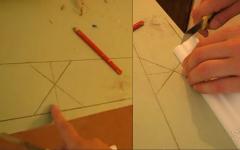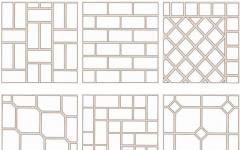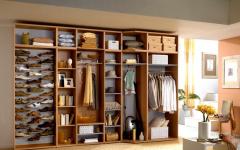Porcelain stoneware (gres) - an artificial finishing material of increased strength produced by pressing under pressure of 500 kg / cm2 and at a temperature of 1300 degrees powdered mixture of clay, quartz sand, spat and dye.
Porcelain stoneware - Excellent floor laying material, extremely durable, decorative, wear-resistant
In these conditions, the mixture is sintering to a uniform structure of high density, which gives the resulting material outstanding characteristics:
- high strength, wear resistance and resistance to mechanical damage;
- low porosity (high frost resistance, close to zero water absorption);
- high heat resistance and resistance to chemical reagents.
High characteristics of Gres make it a popular material for finishing surfaces exposed to intensive and aggressive load. However, these advantages contribute to the finishing technology of the foundations with a partner of their own adjustments.
Consider in stages, how to lay out the porcelain stoneware on the floor in the light of the nuances associated with the distinctive properties of this material.
Choosing a type of ceramographic
Any gres has the characteristics necessary for floor coverings such as strength and resistance to chemical influences. But for the device of safe and aesthetic floor facing, only the following types of finishing porcelain stoneware are suitable:
- Technical - ceramics with unprocessed after firing and pressing facial part.
- Matte - porcelain stoneware with a smooth, but unsalted surface.
- Semi-polished: structured - tile with embossed surface, imitating the structure of natural stone, wood, leather, fabric; Lappatized - gress with the front surface, on which convex sections are partially covered.
- Relief - porcelain stonewares in the facial surface of foreign materials.
- Aged - ceramics with a rough surface resembling manual processing by Kamenotian.
- Anti-slip - material made of technical, matte porcelain stoneware by applying to their facial part of the textured drawing or special grooves.
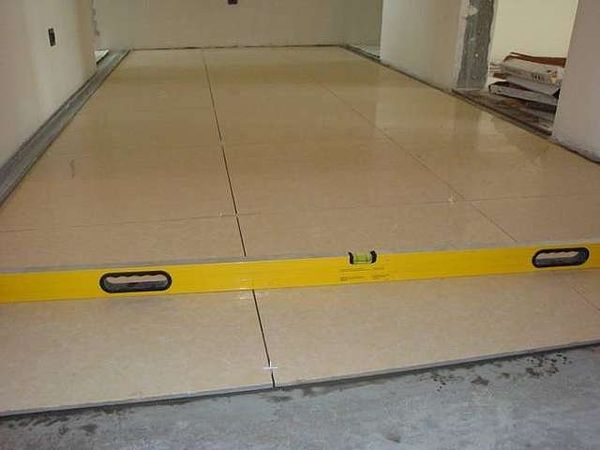
The choice of type of floor stoneware for the floor is more dependent on the nature of the room for which it is intended
The thickness of the porcelain tile for the floor covering of residential premises should be within 7-10 mm, trading halls and offices - 9-14 mm, industrial premises - 14-30 mm.
The selection of adhesive composition under porcelain stoneware
The density of Gres after curing the adhesive provides a compound of high tensile strength (separation from the base). The same pattern of porcelain stoneware reduces the strength of the adhesive composition during the tile shift, but if the floor ceramics in the horizontal plane is fixed correctly, its horizontal displacement is excluded.
The glue for laying on the floor of the porcelain is selected depending on the material of the base. The concrete surface of gres is attached to cement-based adhesives (Cerezit CM 11, Werker, Hercules, Livsil Profit), when laying a tile on a complex base (wood, metal), correctly apply mixtures based on jet resins.
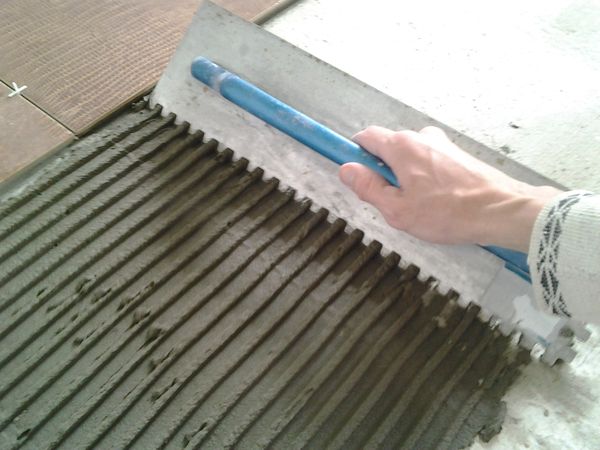
The use of glue for tiles from porcelain stoneware Gres makes it possible to glue the tiles and simultaneously adjust
Gress laying adhesive should be with high adhesion, elasticity and water resistance, to fit the high characteristics of porcelain stoneware.
When the flooring of the binder's elasticity heating, special attention is paid, since the layer of glue under the tile will be subject to significant temperature differences and changes in linear dimensions.
In a nutshell - when finishing the floor, such a durable material, as a porcelain stoneware, is unreasonable to save on the price (and therefore - quality) adhesive mixture.
High strength characteristics of GRES require the use of high-quality and perfect tools when working with it. The cutting of porcelain stoneware is made by electric stovetur or identical mechanical instrument with improved characteristics. The fitting of such a tile can be performed with a grinder with the "dryness", but the disk must have a solid diamond spraying.
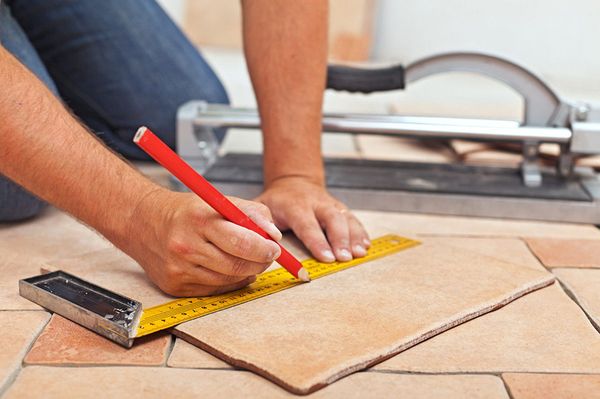
So that the facing turned out to be high-quality, it is worth preparation for work special tools
The cutting of the technological holes for the ladder or pipes are performed by a powerful electric door with crown nozzles, also having a solid diamond spraying. The holes of the smaller diameter are drilled by a perverse drill for the tile, and the complex curly cutting of Gres is performed by an electroll bison equipped with a "diamond" wire.
Risks on the surface of the tile are applied with an alcohol marker, since scratching porcelain even the hell is predicted.
Preparation of the base under the floor Gres
The high characteristics of the porcelain tile simply oblige referring to the preparation of the base with all seriousness so that the money paid for the advantages of Gres was not thrown into the wind. The surface of the floor should be solid, durable and smooth. If the floor is concrete, then it should be aligned with a cement-sandy solution with an adhesive grilling to the absence of drops in a height of more than 3 mm on a linear surface meter.
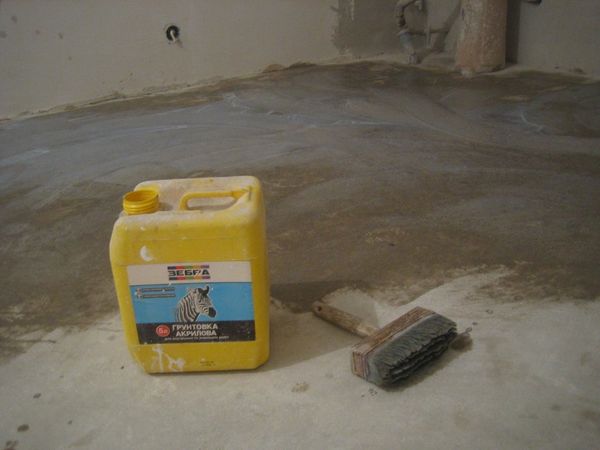
First you need to apply a solution with a combed spatula for the base
Putting out the porcelain stoneware on the wooden floor is not the best option, but it also in certain situations in proper preparing the foundation can justify itself for many years. If the wooden floor is made of hardwood wood (oak, larch), and its design is durable, then the surface is treated with two layers of bitumen mastic, after which it is necessary to put a dense cellophane with the walls on the walls. On top of this waterproofing coating, a carrier reinforced tie, which is placed by gres.
If necessary, the wooden floor is equalized by the electrolaws, or a steering on the plaque board (preferably waterproof) with a thickness of 1-1.5 cm. Then the plywood layer is also covered with bitumen mastic and cellophane, fully insulating the wooden floor from the impact of moisture of the carrier screed.
The concrete base for porcelain stoneware is necessarily ground to improve the contact of the adhesive with a factionable surface.
The layout of the tile from Gres does not differ from a similar operation with another ceramics. Porcelain stoneware is a straight way, with a displacement, diagonally or by an individual sketch.
The technology of laying a porcelain stoneware on the floor provides for a seamless method and installation with a fixed width of the seam. In seamless laying, the tile is selected by one caliber, which differs from the project size and is specified on the package.
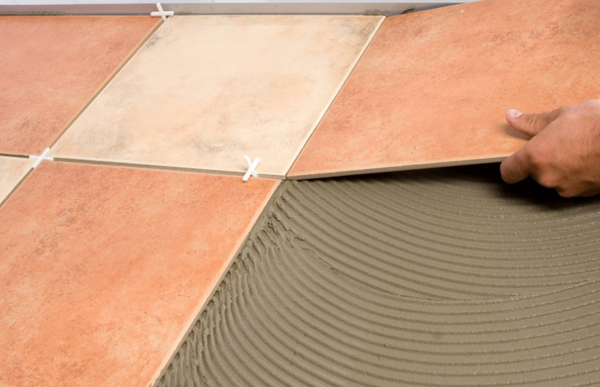
Laying tiles on the floor begins with careful surface preparation
The color of the coloring of Gres tiles in bundles should also be the same so that on the floor after laying there were no color spots. In addition, given the peculiar color of the porcelain stoneware under the color of the natural stone, it is better to pre-put the tile on the floor without glue and correctly distribute the color transitions of the cladding.
The tile layout should be made symmetrically axial lines of the room so that the rows adjacent to the opposite walls consisted of products of the same sizes. Therefore, the floor porcelain stoneware is beginning to put from the center of the room (the intersection points of diagonals or axial lines).
The soaking of Gres before laying due to its high density is meaningless, but cleaning its back surface from dust with a damp cloth is obligatory.
The thickness of the layer of adhesive composition under gres is allowed within 3-10 mm. The excess of this value will lead to the clogging of the interputric seams and the overflow of glue.
The arrangement of Gres seams produce their filling with a high-elastic curing construction syringe, the color of which is selected depending on the presence of seams and clad colors. In seamless styling, the joints are filled with a mixture close to the color of the finishing material. When fixed seams, the grout color is chosen from the reasons for the aesthetics of the combination with tone tone - contrast or with another degree of saturation.
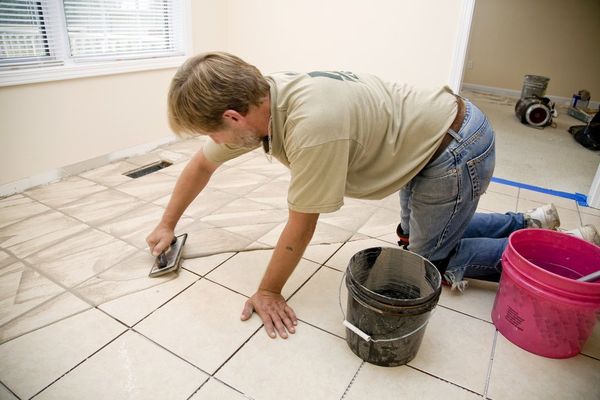
It is necessary to make sure that the grout fully filled the seam
Conclusion
Thus, laying a porcelain stoneware with their own hands, taking into account the cost of tiles and auxiliary materials - the case is responsible. But the cladding technology of Gres does not contain the operations of great difficulties requiring special skills from the artist in addition to the skills of working with conventional tiles. Therefore, taking into account the nuances of working with this material, it is quite realistic to put porcelain stoneware on the floor.



